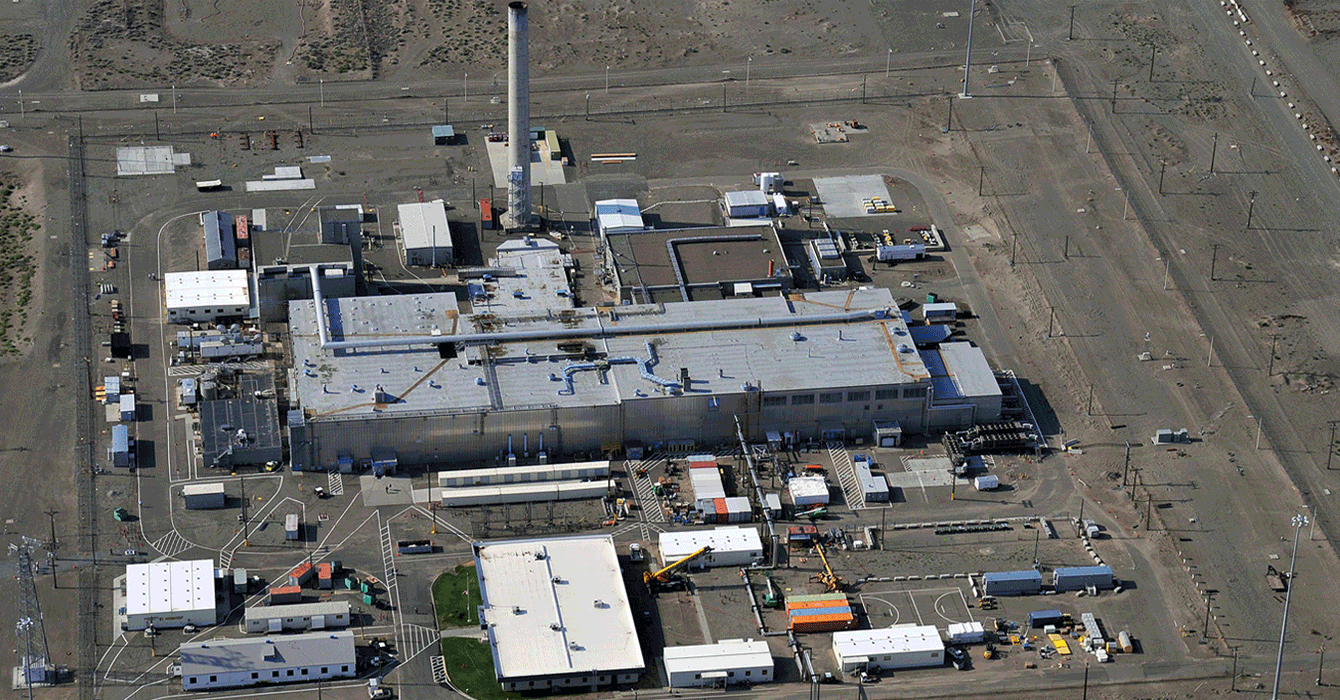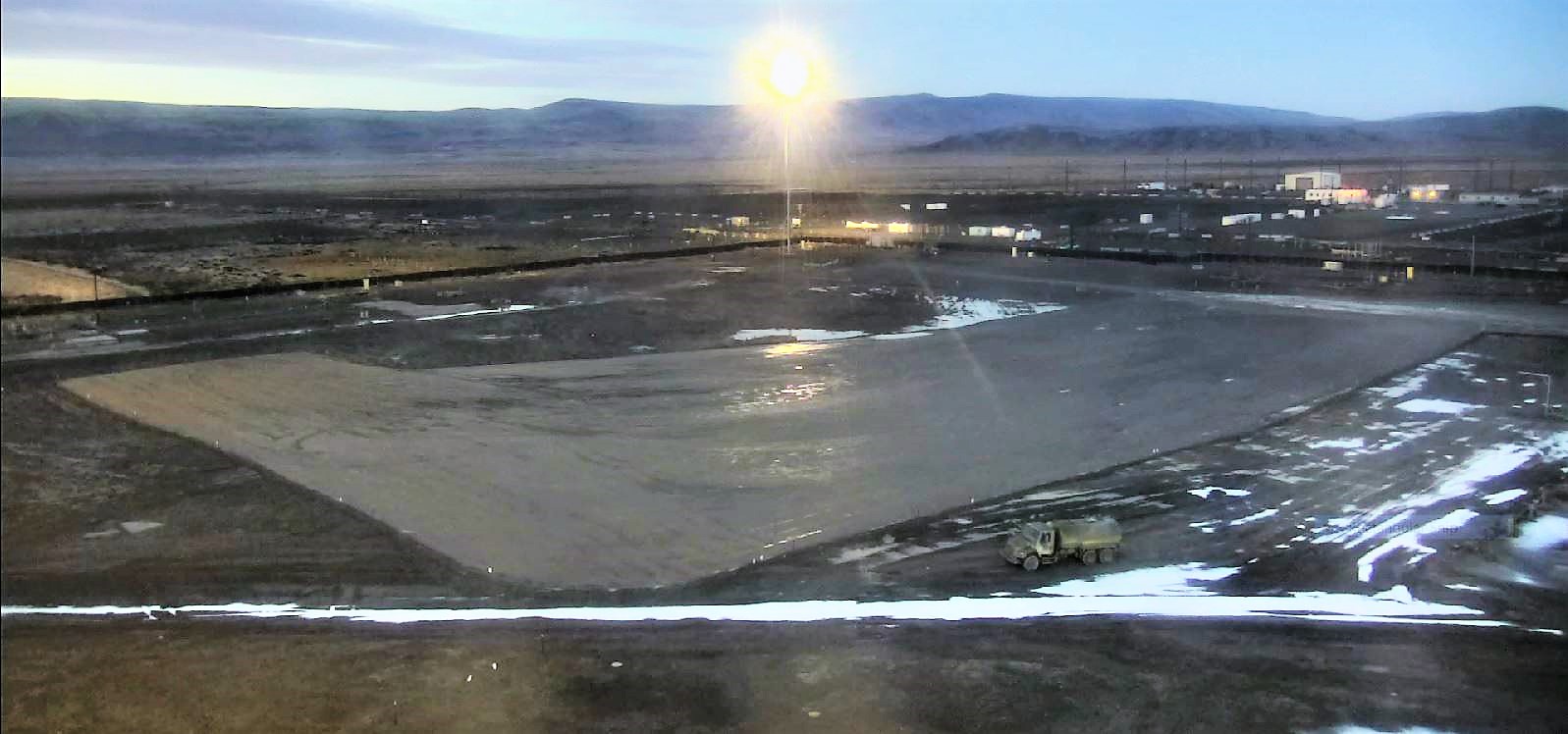Cleanup work concludes at Plutonium Finishing Plant
Work at the Hanford Site's Plutonium Finishing Plant (PFP), one of the site's most highly contaminated buildings, concluded in November 2021.
Workers cleaning up PFP previously completed demolition of the plant's main processing facility in early 2020. That work was finished using more rigorous safety protocols, thanks in part to intervention by our office and the U.S. Environmental Protection Agency.
However, work paused at the PFP site in March 2020 due to the COVID-19 pandemic. In April 2021, cleanup resumed to loadout debris from the final PFP building – the 236-Z Plutonium Reclamation Facility (PRF).
Completion of work at PFP included a characterization of the remaining slab, application of the clean soil cap, and turnover to surveillance and maintenance. Work on the waste sites in the PFP area is expected to continue in the near future.
Read more about PFP's demolition history below.
Summary information
Hanford site, Southeastern Washington

Hanford's Plutonium Finishing Plant before demolition and during demolition in January 2020 (GIF Courtesy: U.S. Department of Energy)
Status updates
Contamination shut down demolition
In mid-December 2017, Energy and contractor CH2M Hill Plateau Remediation Company (CHPRC) shut down demolition as high winds caused widespread distribution of airborne contaminants, including plutonium and americium. In early 2018, we joined with the EPA to issue an order preventing further demolition work while stronger safety protocols could be designed and put into practice at the site.
In the interim, Energy and its contractor tested new safety practices while proceeding with lower-risk work. In summer 2019, together with the EPA, we lifted that order, satisfied that new safety protocols would protect worker and public health and safety. That action cleared the way for full demolition to resume.
PFP work completed November 2021
On April 6, workers conducted a full-scale dry-run of the demolition work package to gauge workforce readiness to resume demolition work.
Following a successful walkthrough, demolition work commenced on April 6 with items located on the 234-5Z pad. This phase of demolition concluded in spring 2021.
PFP demolition background
Work resumed in phases
As new safety protocols were introduced, we allowed work on lower-risk tasks to resume. As the new safety approaches proved to be effective, we allowed gradually more risky work, eventually leading back to full demolition. Demolition concluded in November 2021.
Surveillance and maintenance
PFP will be placed in a surveillance and maintenance mode until waste sites cleanup, which comprises largely of contaminated soil in the area. These monitoring activities help maintain safe and stable conditions until that time.
A highly contaminated facility
PFP was a complex of more than 60 buildings on the Hanford site. Irradiated fuel rods from Hanford’s nine nuclear reactors were processed elsewhere on site to extract plutonium in liquid form – plutonium nitrate. At PFP, that liquid was processed into hockey puck-sized “buttons” that were then sent to nuclear weapons production facilities elsewhere in the country. That work left PFP’s two central processing facilities among the most contaminated buildings at Hanford.
Plutonium Finishing Plant Timeline
2016
Open air demolition begins late 2016.
2017
June 8 — Plutonium americium contamination first detected; 31 workers test positive for internal radiation.
Dec. 14 — We're notified by Energy that work stopped after workers' air samplers show elevated radiation levels. Elevated readings occurred Dec. 8, Dec. 9 and Dec. 12. Work resumes later on Dec. 14 after no further contamination is detected.
Dec. 15 — Contamination found at air monitor outside established control area. Subsequent monitoring finds contamination on hood of vehicle, a concrete barrier, mobile office trailers and on a dumpster. Work continues.
Dec. 16 — Workers cover demolition debris with dirt and with glue-like fixative. New surveys find contamination on cars and around office trailers. A number of employees drive home, potentially tracking radioactive contamination off site and potentially into homes. Demolition continues.
Dec. 17 — Work stopped when contractor, CHPRC, is notified of the earlier contamination found. Workers apply more fixatives to try to prevent more contamination spread.
2018
Jan. 9 — We issue letter, with EPA, prohibiting further demolition work until we’re certain work can continue safely without threat to workers, the public or the environment. The stop-work order is based on Article 32 of Tri-Party Agreement, a legal agreement signed by our agency, Energy and EPA. Article 32 gives any of the agencies authority to stop work if the work endangers health and safety of workers or public. Energy says seven worker vehicles and 16 government or contractor vehicles were contaminated with plutonium, and at least 269 Hanford workers requested blood tests, or bioassays.
Jan. 30 — State Health Department issues a letter formally expressing concerns. Health’s findings show contamination in air samples taken around Hanford site. Letter includes bulleted list of requests, many of which we had previously requested from Energy.
February — Contamination detected by state air monitors as far as 10 miles from the PFP demolition site. We continue to receive reports and news from other sources saying contamination has been found in air filters in worker’s cars, both inside and outside expanding PFP demolition zone. Some toxic airborne contaminants from the buildings have been ingested by workers.
March 22 — After December spread of contamination, 281 Hanford workers tested for radiation doses. Tests show 42 inhaled or ingested contamination. State experts consider the amounts found too small to pose health risk.
June — With EPA, we approve resumption of lower-risk demolition activities.
2019
March — After reviewing, with EPA, Energy’s workscope plans and safety procedure improvements, as well as monitoring progress for ongoing lower-risk activities, we allow additional lower-risk demolition to proceed.
June — With EPA, we lift stop-work order, allowing final phase of higher-risk work to proceed.
Oct. 30 — Work of lower-risk demolition concludes.
Nov. 7 — Higher-risk final phase of demolition resumes.
2020
January — Demolition of PFP's main processing facility finishes.
Feb. 10 — Cleanup work of PFP's 236-Z Plutonium Reclamation Facility resumes.
March — April 2021 — PFP project gets put into shutdown mode due to COVID-19 pandemic.
2021
April 6 — Work resumes at PFP.
November – Demolition work concludes for PFP.
2022
Energy anticipates preparation for waste sites remediation.

The Plutonium Finishing Plant contamination control cap. (Photo Courtesy: U.S. Department of Energy)
News releases
None at this time

